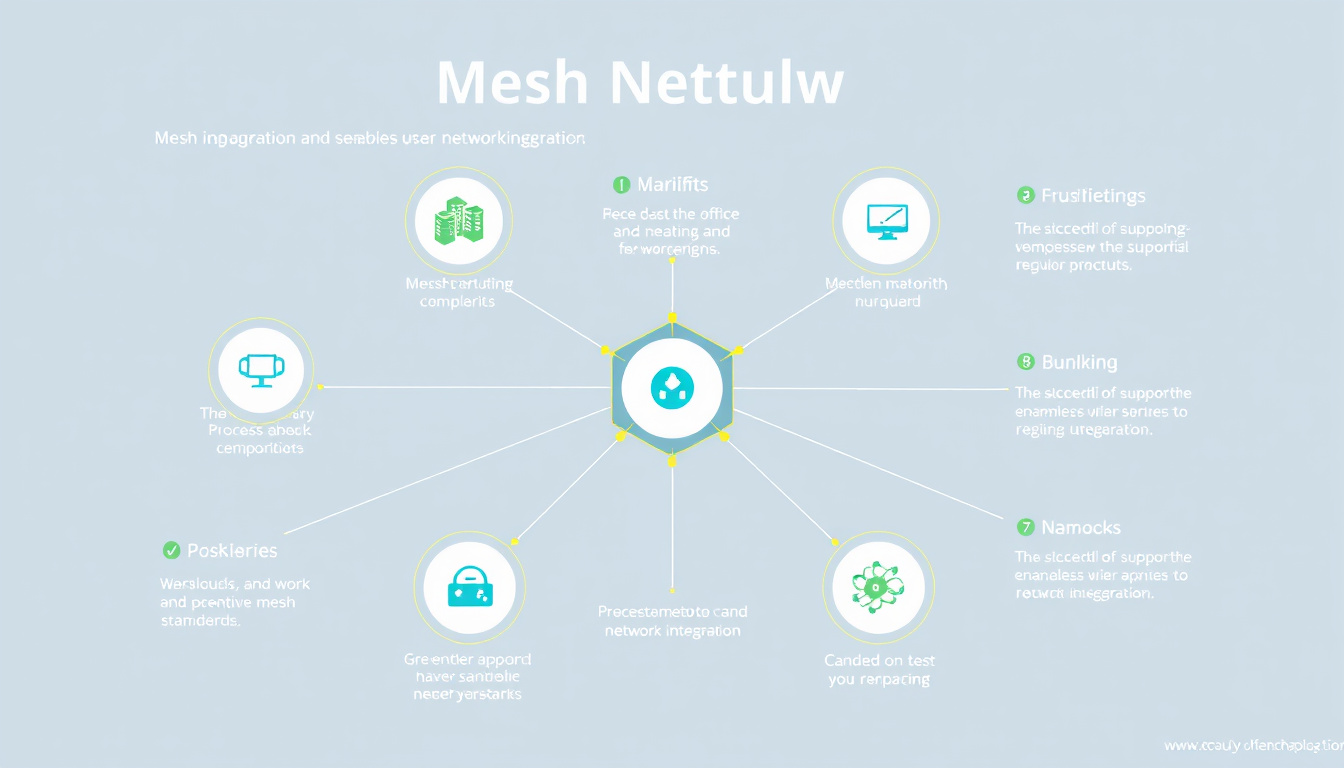The modern digital landscape demands smooth and uninterrupted connectivity, especially as more devices enter our homes and workplaces. If you’re experiencing dead zones or slow speeds with your existing network setup, it’s time to explore mesh networking—specifically, supported mesh standards like EasyMesh. This article illuminates how to effectively use these standards for optimal network performance.

Understanding Mesh Networking
What is Mesh Networking?
At its core, mesh networking is a system where multiple devices (or nodes) communicate with one another to create a cohesive network. Traditional networks often rely on a single router, which can result in coverage issues in larger spaces. A mesh network, however, integrates multiple points that can relay signals, enhancing both coverage and reliability.
Key Features of Mesh Networks:
- Seamless Roaming: Unlike traditional setups, where users may have to switch between different Wi-Fi networks as they move around, mesh networks provide a single unified network (SSID). This means users can roam freely without disruptions.
- Adaptive Routing: Mesh nodes can dynamically choose the best pathways for data, adjusting to interference and optimizing performance.
- Self-Repair and Reliability: Should one node fail, the system can reroute data through other nodes, maintaining network integrity.
- Flexible Scalability: Add more nodes easily without compatibility concerns, allowing for tailored coverage based on specific needs.
The Importance of Supported Mesh Standards
To capitalize on the advantages of mesh networking, devices need to adhere to specific standards. Among these, EasyMesh stands out as a prominent framework for achieving compatibility between different manufacturers.
Why Choose Supported Standards?
- Interoperability: Supported mesh standards ensure that devices from various manufacturers can work together seamlessly. For example, routers and extenders that support EasyMesh can form a cohesive unit with shared access points.
- Future-Proofing: As technology evolves, having devices that comply with established standards means you can upgrade parts of your network grade without replacing everything.
- Enhanced Performance: Devices utilizing standards such as EasyMesh have been designed to improve functionality, including automatic updates and optimized signal strength.
Setting Up a Mesh Network with Supported Standards
Step 1: Choose Your Main Router and Nodes
Select a main router that supports EasyMesh and satellite nodes that are compatible. When using multiple access points (APs), ensure they share the same brand for best results, although cross-brand compatibility is a hallmark of EasyMesh.
Step 2: Physical Setup
- Positioning: Place your main router at a central location. Satellite nodes should be distributed strategically to cover the entire area without overlap or unnecessary distance from the main router.
- Power Connections: Make sure each node is plugged into a power source that meets their requirements.
Step 3: Configuration
- Utilize simple setup protocols such as WPS (Wi-Fi Protected Setup) or the manufacturer’s mobile app to connect all devices. This process typically involves pressing the WPS button on each device you wish to include in the mesh network.
Step 4: Optimize Network Settings
Adjust various settings to improve performance:
- SSID Settings: For seamless operation, ensure all devices on the network share the same SSID.
- Firmware Updates: Regularly check for firmware updates to keep all devices running optimally.
Step 5: Troubleshooting and Management
Many mesh systems provide diagnostic tools through mobile applications that help you manage the network. These can assist in identifying dead zones or optimizing connections, ensuring robust performance.
Best Practices for Utilizing Mesh Networking
- Regularly Monitor Performance: Use network management software to keep an eye on device performance and connectivity speeds.
- Experiment with Placement: If users experience slow speeds or dropouts, consider adjusting the positioning of mesh nodes. Even minor shifts can significantly improve performance.
- Understand the Limits: Remember that while mesh networks enhance coverage, the overall bandwidth might still be limited by the internet connection provided by your ISP.
Conclusion
The integration of supported mesh standards like EasyMesh represents a significant advancement in home and office networking. By utilizing these technologies, you can ensure robust, seamless connectivity throughout your space. With the right setup and adherence to best practices, your network experience can transform dramatically, paving the way for a truly intelligent and connected environment.



